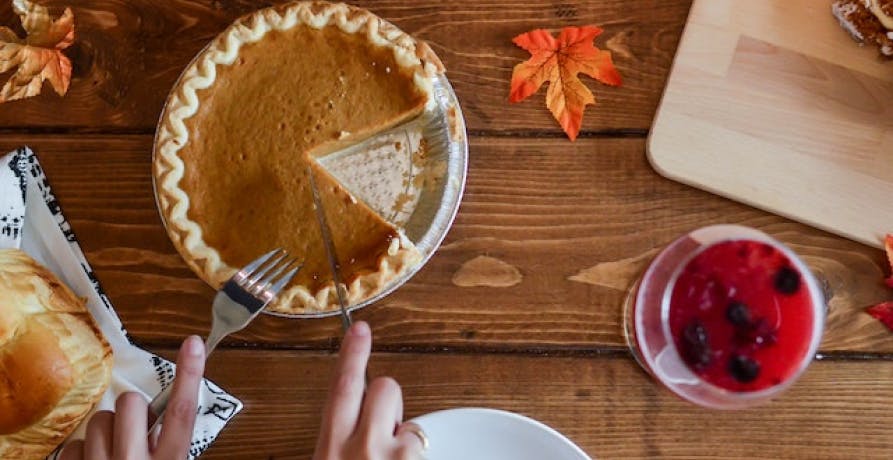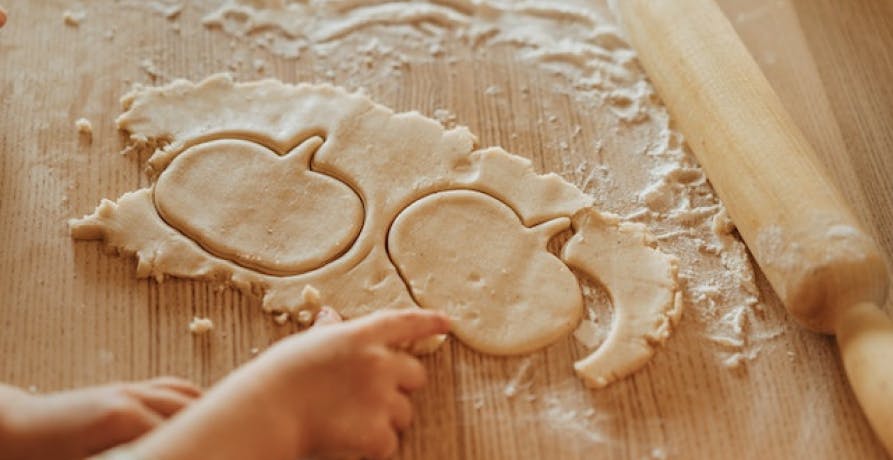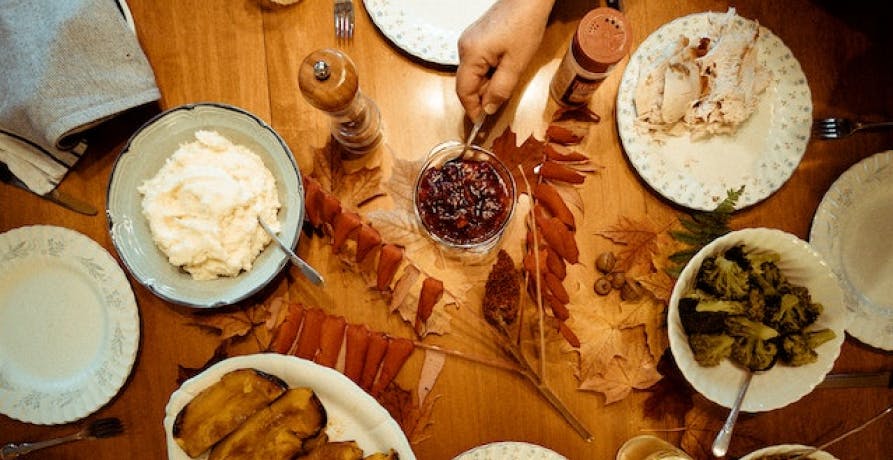Is coffee threatened by climate change?
In this article, we explore how climate change threatens coffee production's future and what this means for the future of your favourite drink.
Your request has been taken into account.
An email has just been sent to you with a link to download the resource :)

When I left my life in the U.S. to move to France, there were a lot of things I left behind that I knew I wasn’t going to miss that much: driving, short lunch breaks, big department stores and commercialism, American holidays like Fourth of July and Halloween… but the one American tradition I knew I would never part with was Thanksgiving.
Every year, just like any other American – my family and I take Thanksgiving pretty seriously. I bake two pies for the family, my mom does the cooking, my dad handles the turkey, family comes to visit us from around the country and now, I travel across the Atlantic Ocean just to sit down for the infamous meal.
However, some of the many typical Thanksgiving traditions I just mentioned aren’t the greatest for the environment. Is this beloved American holiday sustainable, or is it similar to Halloween – as in it’s unknowingly creating excessive emissions and waste?
In this article, we'll discuss the history of Thanksgiving, what makes it unsustainable, and how we can this classic American holiday more eco-friendly moving forward.
Thanksgiving is an American holiday that takes place annually on the last Thursday in November. Whether you're in pre-school, college, or working full-time – most Americans get Thursday to Sunday off, and when I was in high school and college: I usually only went to school Monday and Tuesday of that week.
Unlike the rest of the world, Thanksgiving is often marked as the start of the holiday season – with many putting up their Christmas lights, decorations, and Christmas trees as soon as the week of Thanksgiving.
💡 Many believe that Thanksgiving started way back with the pilgrims – who came to America from the United Kingdom on a ship called the Mayflower back in the 1620s. The first Thanksgiving dates back to 1621, but it wasn’t as simple as some new colonists gathering for an autumn feast in their new home.
The Wampanog were a group of Native Americans that lived in what is now known as present day Massachusetts. They had several villages, and had been trading with European visitors for years – but they weren’t too fond of the new permanent settlers. This is because in 1616, Europeans brought a disease that killed much of the Wampanog, meaning they were worried when a new group of colonists arrived in November of 1620.
These colonists weren’t prepared for the upcoming harsh Winter or their new life, and resorted to stealing food and valuables from the Wampanog. The two groups didn’t get off to a great start, but they eventually decided to be peaceful, with one of the Wampanog (who the pilgrims called Squanto) actually showing them how to plant crops to harvest. This marked the beginning of a friendship, which later brought about the meaningful intent behind Thanksgiving – because thanks to the help of Squanto, the city of Plymouth had a plentiful harvest by the next Autumn in 1621.
The Wampanog ended up joining the colonizers for their feast, but since the colonizers didn’t have enough to feed everyone – the Wampanog went out hunting as well to partake in the harvest celebration.
👉 Therefore, it could be said this is where the concept of a “potluck”, a common tradition in Thanksgiving, came about – as many people are assigned to bring an individual dish or dessert to a Thanksgiving dinner.

The first “Thanksgiving” consisted of feasting on fish, corn, onions, carrots, spinach – and all of the other vegetables that were successfully harvested.
👉 However, it wasn’t until 1863 when President Abraham Lincoln declared Thanksgiving to be a national holiday as an attempts to heal the nation amongst the civil war.
Many of the popular dishes we eat today during Thanksgiving – such as turkey and pumpkin pie, were popular foods in New England in the 1800s, where Thanksgiving originated between the colonists and the Wampanog all of those years ago.
That was how Thanksgiving came about then, but how do Americans celebrate Thanksgiving today?

Most Americans celebrate Thanksgiving today by spending time with family and friends, watching football, shopping for exceptional deals (and often for early Christmas presents) during Black Friday or Cyber Monday, and having a big feast with Turkey, mashed potatoes, stuffing, pumpkin pie, sweet potatoes, cornbread, and casseroles.
It’s similar to Christmas, except you don’t exchange presents – and besides eating to your heart’s content, Thanksgiving is supposed to be about expressing gratitude for what you have in your life. This is similar to what the Wampanog and colonizers did back in 1621.

Thanksgiving is all about abundance, but it’s not such a great thing when it comes to how many carbon emissions the holiday is responsible for – given that so many Americans cook massive meals and travel across the country for Thanksgiving.
For instance, the carbon footprint of a traditional Thanksgiving dinner is enormous – though, this may not come as a surprise to many seeing that Thanksgiving is the only national holiday to be (for the most part) all about food.

The average Thanksgiving table hosts twelve people – around five times the size of the average American household, showing how many people travel. At that Thanksgiving table, while the dishes are bound to vary, over 80% of Americans make sure to roast a Thanksgiving turkey for their dinner – which is the highest carbon emitting part of the meal.
Those twelve guests means a twenty pound turkey needs to be roasted, which can emit a whopping 60 pounds of carbon dioxide emissions alone – and that doesn’t include the additional cooking time, where most have their turkey slow roasted in their ovens for hours at a time. That’s a lot of electricity for one dinner, and the turkey isn’t all that’s cooked – the oven stays on for a couple additional hours depending on how many pies you cook, for the stuffing, and casseroles. After all, those marshmallows on top of your sweet potato casserole won’t broil themselves.
When Americans put additional meat in their stuffing, it can produce an additional twenty four pounds of carbon dioxide emissions if made for the average Thanksgiving table of twelve people. Making cranberry sauce, mashed potatoes, and pies are also carbon intensive – as many of these classic Thanksgiving dishes require exorbitant amounts of butter and milk, which also create a carbon footprint. When all is said and done, a typical Thanksgiving dinner creates over 100 pounds of carbon dioxide emissions.

In addition to the big Thanksgiving meal, the classic American holiday also creates a carbon footprint as a result of millions of people traveling within the country.
💡 Remember, Texas is roughly the size of France – now picture five times the amount of French people traveling during Thanksgiving weekend. This accounts for thousands of flights and road trips, all of which are carbon intensive.
Before many people get the chance to sit down at the Thanksgiving table with their families, they have to travel to get there first. In fact, Thanksgiving 2023 saw over 55 million people traveling for the holiday weekend. Whether Americans opt for a Thanksgiving road trip or fly – Americans produce .802 pounds of carbon dioxide emissions annually per mile traveled by car, .505 carbon dioxide emissions by plane, and .408 carbon dioxide emissions by train when it comes to Thanksgiving travel.
Black Friday and Cyber Monday shopping, a big tradition associated with Thanksgiving – aren’t innocent, either. The two in combination, predominantly both taking place online following the Covid-19 pandemic: left behind a monstrous total of 386,243 tonnes of carbon emissions in 2021.
Lastly, while it may seem trite – it’s important to note one of the biggest Thanksgiving traditions: watching football. In fact, the NFL saw their highest ratings ever for Thanksgiving 2021 than they had since 1998 – meaning that even in the age of social media, recording, and instant replays: people are opting to watch football live. This also means that millions of T.V.s stay on for hours at a time on Thanksgiving – burning through electricity in an era where energy needs to be conserved the most.
👉 Overall, Thanksgiving encourages consumerism habits that exacerbate the amount of carbon emissions already created from the holiday meal alone.

Just like Halloween, there’s no need to give up on Thanksgiving entirely – but there’s a lot we can all do to adjust our Thanksgiving habits to make them more environmentally friendly – such as by refraining from excessive travel and altering our holiday menus to be more sustainable and optimizing the use of seasonal ingredients.
For instance, the incessant amounts of cooking that come with Thanksgiving take up a lot of energy – and the food itself is carbon intensive. Therefore, one of the best ways to reduce your carbon footprint during Thanksgiving is to make small adjustments in your cooking plans – such as by swapping out of season ingredients for fresh ones.
To make your Thanksgiving more sustainable when it comes to your holiday menu – one of the best things you can do is make your Thanksgiving more vegetarian friendly by cooking with more vegetables and less meat. For example, my mom makes stuffing with sourdough bread, mushrooms, celery, vegetable stalk, and sage – no one ever misses the meat. It’s easier than you think to switch out turkey for added vegetables inside of your stuffing, and plus – you'll be able to accommodate more of your guests in the event you have a few vegans or vegetarians around your Thanksgiving table this year.
💡 Also, shop for local produce if you can – odds are, all of your Thanksgiving recipes require ingredients that are in season. This way, you don't contribute to the emissions it took for the produce at your grocery store to get there from where it came from.

Here are a few other tips to reduce your Thanksgiving carbon footprint:
💡 However, if you’re like me (living abroad or too far away to drive) and avoiding high carbon emitting travel isn’t really possible – you can do one of two things: opt to take a train if possible to avoid driving, or pay to offset the emissions from your flight with a carbon offsetting project.
Ultimately, Thanksgiving isn't the least sustainable holiday on the face of the Earth – but it certainly isn't getting a good appraisal value from Mother Nature, either. Luckily, there are small steps we can all take to make Thanksgiving more sustainable for years to follow.
If reading this article about the sustainability of Thanksgiving has made you interested in reducing your carbon emissions to further fight against climate change – Greenly can help you!
At Greenly we can help you to assess your company’s carbon footprint, and then give you the tools you need to cut down on emissions. We offer a free demo for you to better understand our platform and all that it has to offer – including assistance with boosting supplier engagement, personalized assistance, and new ways to involve your employees.
Click here to learn more about Greenly and how we can help you reduce your carbon footprint.


We review the green news once a month (or more if we find interesting things to tell you)